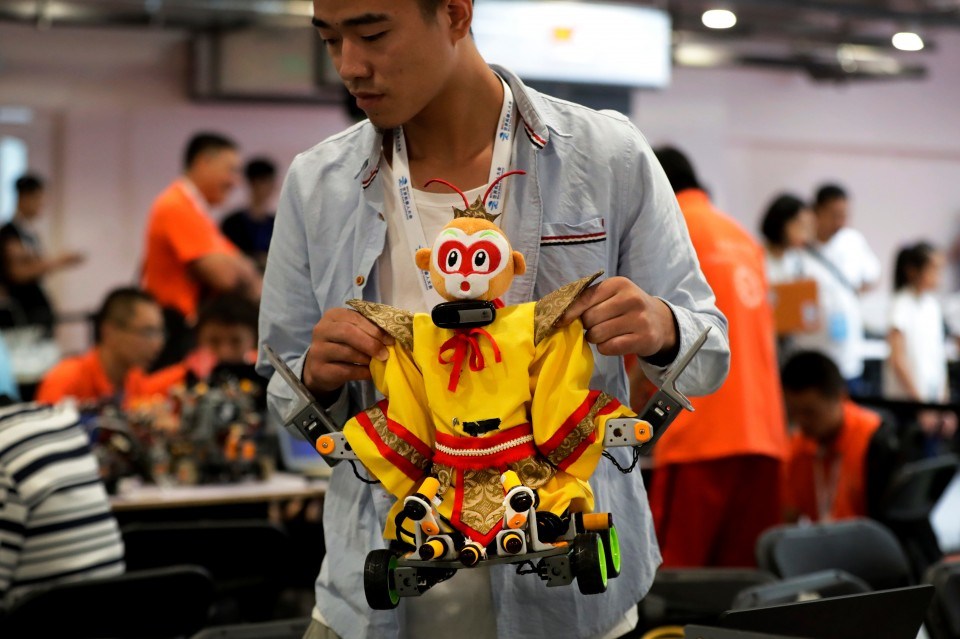Zheng Yongnian is director of the East Asia Institute at the National University of Singapore. His seminal work is his book “The Chinese Communist Party as Organizational Emperor.”
SINGAPORE — The ongoing trade feud between China and the United States centers on U.S.-proposed high-tech tariffs and its demand that China end subsidies that drive its high-tech market. These demands reveal deep-seated misconceptions of China that go far beyond the immediate concerns over reciprocal access to China’s vast market or the size of its trade surplus.
From the Chinese side, the misperception can be blamed on the outdated and at times troubling propaganda machine that overplayed the nationalistic platitudes of the “Made in China 2025” campaign. The goal of that initiative is to elevate manufacturing from mainly industrial to higher-value goods like robotics, artificial intelligence, electric cars and semiconductors. But nationalistic sentiments helped to misguide Western observers and have distorted the plan’s original goal of sustaining the country’s long-term development — not conquering the world.
Admittedly, China’s progress in opening its market has not been speedy enough to satisfy Western appetites. It is, however, improving, as indicated by Chinese President Xi Jinping’s pledge to provide a more open China, further reduce tariffs on automobiles, allow foreign ownership of companies in China to exceed 50 percent and liberalize access to financial services.
Yet even if those issues are resolved, it won’t satisfy the United States. What the dispute is really about is America’s fear of losing dominance in the technologies of the future. For China, it’s a conviction that its national rejuvenation will stall if it does not upgrade its economy. Addressing this overarching contest requires a more level-headed understanding of the non-offensive intentions behind China’s strong rhetoric of techno-nationalism and how high-tech modernization bears on America and the world.
What makes China’s rapid high-tech advances remarkable has less to do with transfers from developed economies than with the innate scientific character of its culture. Historically, as shown in Joseph Needham’s multi-volume “Science and Civilization in China,” China was leading many scientific and technological advancements before the West surpassed it. Part and parcel of Xi’s “new era” therefore aims to restore this once-hallowed character of Chinese civilization.
There is a consensus among China’s current leadership that the closed-door policy upheld by the Ming and Qing dynasties left China far behind the industrialized West in the late 19th century. Seen in this context, the intentions behind “Made in China 2025” are not as chauvinistic or predatory as they seem to be when discussed by the Trump administration and in Western media. Rather, they are merely the latest steps in the structural transition of China’s economy that Deng Xiaoping initiated decades ago.
China’s leaders are well aware that the country still lags far behind the United States in areas of high-tech and science, from jet engines to biopharmaceuticals to operating systems and integrated circuits. It will be decades before it can close the massive gap with leading Western countries.
Though America’s tech tariffs may slow the pace of China’s leap forward, they will not be able to stem its high-tech catch-up, which is only the tip of the iceberg in China’s inexorable economic rise. China’s enormous reserves of state capital, its substantial pool of ready talent and its huge market will continue to drive it forward.
Indeed, the United States may be shooting itself in the foot. U.S. trade hawks fail to grasp the record of contemporary history, which demonstrates that technology bans imposed by the West are more often than not counterproductive when directed at a capable country.
For example, China was compelled to go solo on projects such as its manned spaceflight program after being cut off by rigorous exclusion policies imposed by the West. Also, strict technology bans by America have forced China to lay out huge national investments that led to its exceptional performance in building supercomputers that surpass those of the United States. And in the aftermath of the 1989 Tiananmen Square movement, the full-scale embargo on military technology imposed on China by the West propelled and motivated China to develop independent military weaponry systems.
Over recent years, China has registered patents that are competitive in critical industries, from pharmaceuticals to biotechnology, telecommunications and electronics. For the first time last year, it received more patent applications than the United States, the European Union, Japan and South Korea combined.
If China-U.S. tariff frictions continue to escalate, America will lose access to the world’s most attractive market and enervate its own technological progress. The likely domino effect of trade protectionism will nullify the rule-based, post-war global economic order that has been the key to American prosperity.
The zero-sum approach to trade and technology may well have hastened the collapse of the Soviet Union in the days of the Cold War, but China is an entirely different case. Here the analogy does not apply. By contrast, a more cooperative integration of value chains between China and the United States would undoubtedly tighten their interdependence, nurture their technological competitiveness and thereby benefit the global market economy.
China will not abide any effort to thwart its trajectory of bringing its people’s well-being up to world-class standards. If the United States understands “Made in China 2025” in this context, it has no reason to fear that aim. Techno-nationalist troublemakers should stop stoking Western anxieties out of an outmoded inferiority complex — the impetus for which China’s accomplishments have by now erased.
This was produced by The WorldPost, a partnership of the Berggruen Institute and The Washington Post.




